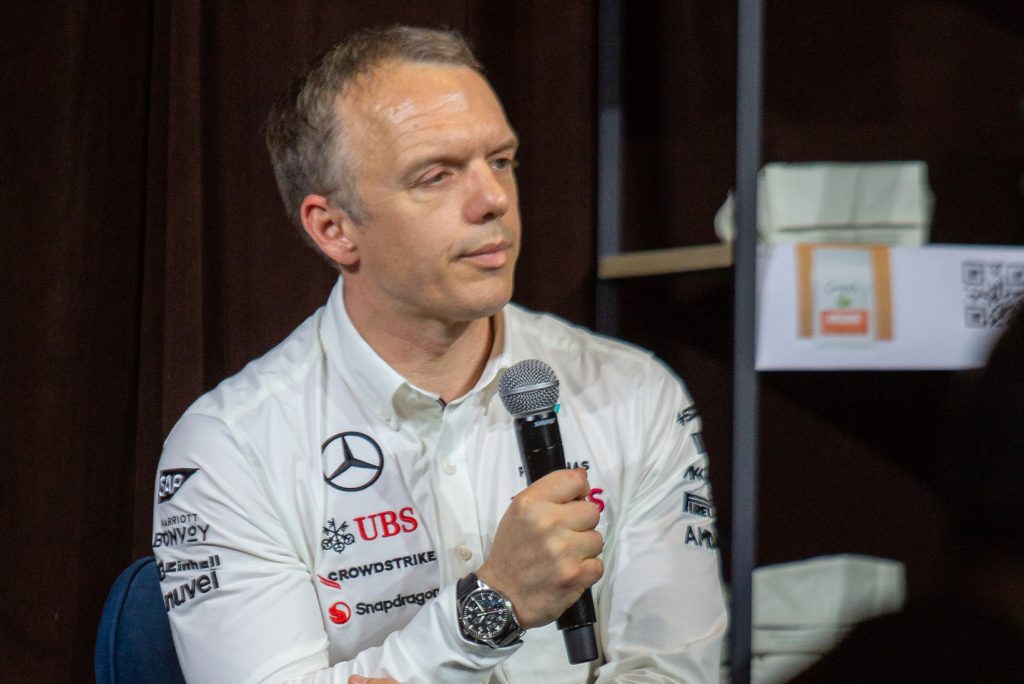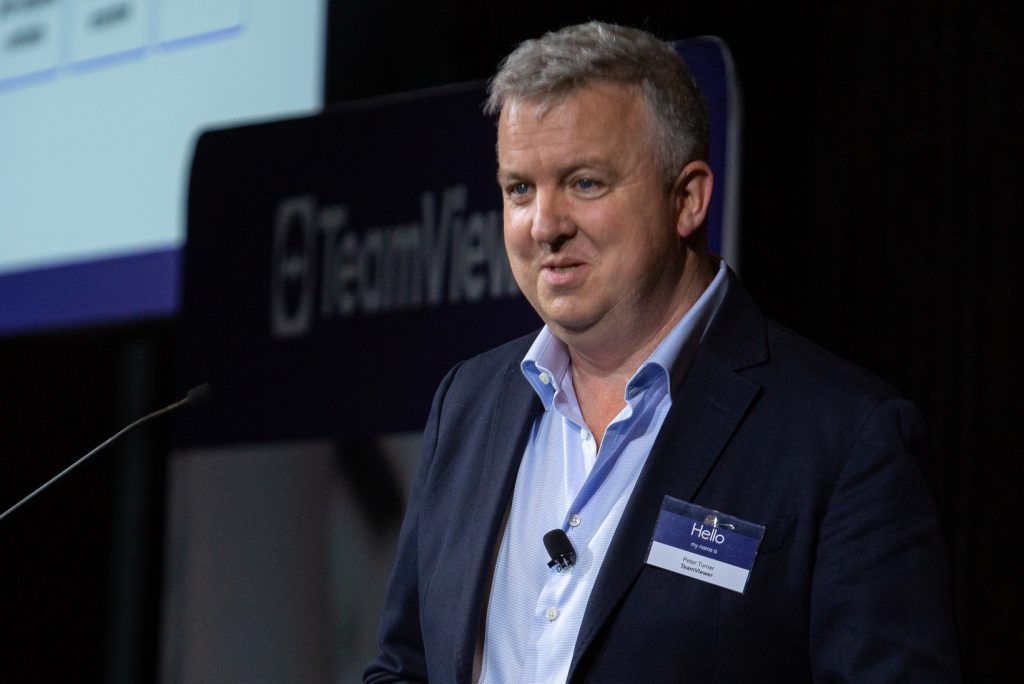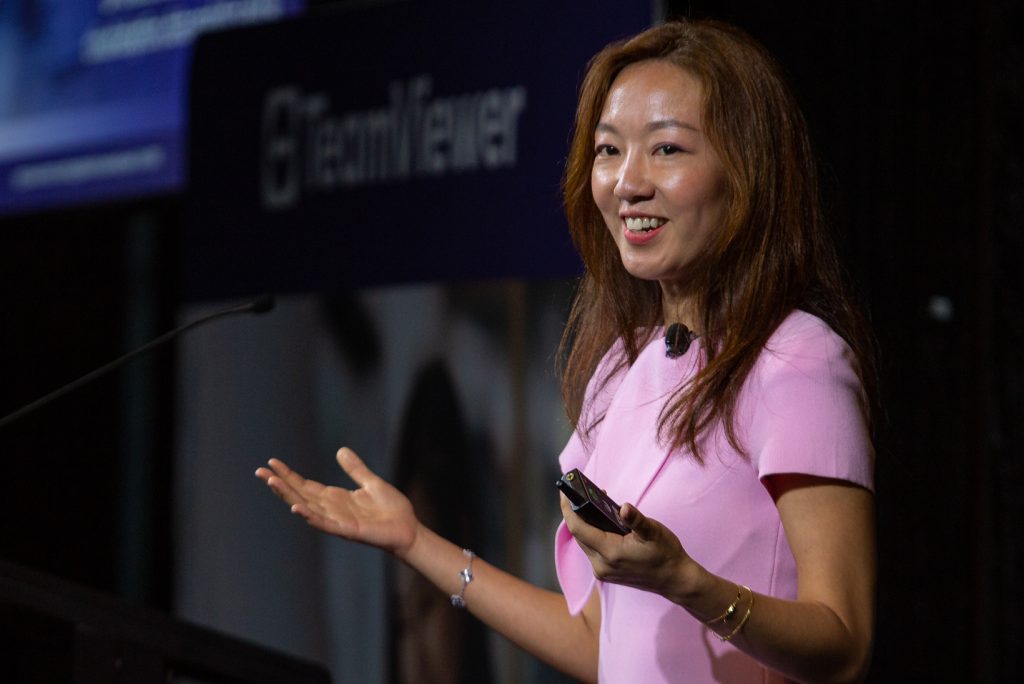May 7, 2024
For more than 100 years – from the Grand Prix days of the early 1900s to the show-stopping Netflix bonanza that is Formula One (F1) in the modern era – technology has transformed the sport of motor racing.
Irrespective of century, decade or year, innovation has always been viewed as an expectation – a baseline entry requirement to the starting grid. Because amid the glitz and glamour is an unwavering pursuit of glory.
“Technology has always been a key part of the sport but the stopwatch was – and still is – the key metric,” clarified Michael Taylor, IT Director at Mercedes-AMG PETRONAS F1 Team. “The stopwatch measures how well we are performing as an organisation and we get to see those results every two weeks, in real-time during the course of a season.”

Speaking at TeamViewer Experience Day in Sydney – on the eve of the Australian Grand Prix in March – Taylor articulated with authority the key role of technology in enabling the stopwatch to come down in terms of lap times, emphasising the importance of constant evolution in the context of professional competition.
“Yes, every second counts but it’s more than that – every millisecond counts,” he said. “We measure in milliseconds because they make a difference in everything we do within the organisation. The grid is so tight.”
In other words, pace is paramount.
“It’s about ensuring that everything that we need to make a decision is where we need it, when we need it,” Taylor outlined. “Streamlining operations so nothing takes longer than it needs to and implementing technologies that enable us to make split second decisions with the right data.”
Aligned to a mandate of iterating and updating the car for each race of the season – combining evolving strategies with changing track conditions – Mercedes is continually executing at speed and scale.
In any given location, a team of 100 at the track and more than 1400 colleagues back at the UK base are enabling the race team to perform – “it’s a huge team effort”.
“We design, manufacture, test and build a brand new car every year, alongside our nine other competitors,” Taylor added. “And our competitors are fierce. The reality is that in F1, if you’re not innovating then you’re standing still.
“In that respect, it’s a tough sport but that’s credit to the competitive nature and effectiveness of the teams that we are competing against.”
As articulated by Taylor – and as demonstrated on race day – the innovative power of F1 has been obvious long before the digital era.
Faced with such fierce competition and the challenge of pushing beyond physical and regulatory boundaries, this is a sport which has consistently attracted exceptional minds to drive progress.
“This dynamic environment has transformed F1 into the ultimate testing ground – breakthroughs in technology find their way into everyday road cars,” Taylor added.
“Take, for instance, steering wheel buttons. In road cars, the controls for adjusting volume, radio stations, the driver’s display, and even setting cruise control, all find their origins in F1 technology.”
F1 has been on a transformation journey – powered by digital technologies – to achieve better performance through improving manufacturing efficiency by reducing waste and risks. The end result is innovation infused with safer racing.

The path started with computerised engine-management systems before progressing into digital design technologies – notably digital twins – of the cars and virtual simulations. Today, a fully connected environment utilising machine learning and artificial intelligence (AI) with data as the currency is commonplace.
“Technology is a fantastic enabler when you’re chasing milliseconds of performance,” Taylor affirmed.
Partnering to transform in F1
In tandem with transformation, Taylor was quick to acknowledge that the most successful partnerships in the sport are built on people, relationships and technology – citing TeamViewer as a leading case in point.
Before becoming an official partner in 2021, Mercedes used TeamViewer as a customer to improve workforce flexibility and gain a competitive advantage through streamlined engagements at speed.
Since then, the partnership has developed aligned to the shared goal of driving efficiency across team operations through digital transformation.
“We had been using drop-down screens for a while but up until TeamViewer, we hadn’t found anything reliable enough to deliver what we needed,” Taylor recalled. “Without the screens, drivers would have to get out of their car and come over to a screen between runs and this is just impractical.”
In response, TeamViewer connections mean that Mercedes can now share all the content required – including images and videos – without any loss in quality. This provides drivers, engineers and team members in the race support room (RSR) with the same data on telemetry, competitor performance, weather and other information to make informed decisions.
“Our telemetry is a heavyweight app and so we need a remote connection that can support it,” Taylor noted.
In demonstrating how the drop-down screens work in practice, Taylor explained that what is shown to the driver is compiled by engineers – the screens are connected by an “umbilical cord” to the overhead unit containing two PCs. TeamViewer Tensor is used to connect the engineers with these PCs and therefore the screens.
“It must be a simple interface for the drivers as they are in gloves, so they have one button to press to scroll through the data,” he clarified. “The engineers and drivers can talk through what they are viewing and decide on an approach.
“For example, if a competitor is breaking later going into a corner and therefore leaving the corner with more speed, Lewis [Hamilton] or George [Russell] need to know that to change their drive. This is why the screens and the connection to them is so important in making critical decisions about strategy, tires and pit stops – all of which impacts our performance.”
Discussions between Mercedes and TeamViewer take place on a weekly basis to better understand how to maximise the technology deployed, supported by brainstorming sessions designed to create new ideas for features and ways of working.
For example, the partnership has already optimised remote operations and connectivity between team processes trackside and in the factory which is located at Brackley, UK.
“We have a shared mindset,” added Peter Turner, Chief Commercial Officer at TeamViewer. “We are aligned on the need for constant innovation and to re-evaluate existing processes. We have the courage to try new things and trust in the power of collaboration.”

All within the framework of maintaining the highest levels of enterprise-grade security, Turner added.
“Security is crucial in everything we do,” he said. “We have dedicated teams focused on ensuring the security of our solutions, the security of our customers and also our own security.
“Mercedes trusts us to ensure connections and ultimately its critical data are kept within the team. They travel to 24 races in a year across the globe and they demand the best possible security posture from us in order to connect and share data securely.
“But it’s the same for all our customers, features like end-to-end encryption and conditional access are fundamental in our solutions.”
Executing an innovation agenda in Australia
Often referenced yet seldom maximised, digital transformation represents untapped opportunity for forward-thinking businesses across Australia.
This is a concept capable of innovating industries and empowering employees, yet organisations remain challenged by an inability to execute strategies with purpose and pace. New technologies are emerging to overcome such strategic barriers however.
“Driving innovation is very relevant to every organisation in Australia,” observed Sojung Lee, President of Asia Pacific at TeamViewer.
According to Moxie Research – which surveyed 251 IT decision-makers in Australia during February 2024 – innovative CIOs are evolving corporate objectives to increase focus on the following key initiatives during the next 6-12 months, in order of strategic priority:
Maintaining the value theme, 62% of CIOs are now taking a lead role interacting directly with customers, motivated by a desire to identify new ways to capitalise on commercial opportunities (60%).
“The one way to move forward and remain competitive is through digital transformation, which is accelerated by key technologies like connectivity, cloud and AI,” Lee advised.
As outlined by Moxie Research, such business sentiment is playing out in the numbers with AI and machine learning identified as the most strategic future deployment for CIOs during the next 6-12 months in Australia (no.1 priority). This is closely followed by cyber security (no.2) and cloud management (no.3), in addition to data and analytics (no.4).
“Software is the backbone of digital transformation,” Lee explained. “A direct correlation exists between software spend and the level of innovation.”

Addressing an audience of IT decision-makers and channel partners in Sydney, Lee outlined three key drivers accelerating transformation agendas within Australian organisations:
From an internal perspective, Lee said businesses are using data as a foundation to automate processes and capture invbaluable insights to bolster performance.
“We know about 80% of the global workforce are frontline workers, and most of them currently benefit very little from digital transformation,” Lee claimed. “By enhancing their work with digital tools and connecting them to their companies’ back-end, there is great room for efficiency and productivity improvements across the value chains. And this is already happening.”
Citing a partnership with Hyundai Motor in Singapore (HMGICS) – which started in 2022 – Lee shared a “leading example” of how to build a smart factory of the future utilising emerging and established technologies.
The business has adopted a cell-based production system and employed skilled technicians to work collaboratively with robots and machines. To help the technicians better streamline operations, TeamViewer deployed smart glasses with step-by-step instructions, improving daily tasks such as assembly, maintenance and check-lists.
“At the same time, everything can be monitored and optimised in real-time, which enables closed-loop optimisations,” Lee added. “For example, if a machine detects a deviation from the set quality standards, it can trigger adjustments to bring the process back into alignment.”
Externally speaking, Lee cited after-sales services as “crucial” to customer experience. Whether servicing industrial-grade coffee machines or wind turbines – or even digital signage – end-users require immediate insights and instant support.
“Our solution is embedded into any type of machine for remote control, maintenance and repair,” Lee said. “Through our partnership with an automotive brand in Australia, technicians can connect with an expert to help diagnose, troubleshoot and repair issues remotely using our software. Repairs are completed quicker, allowing customers to get behind the wheel faster.”
Delving deeper, Lee said TeamViewer has been collaborating with Apple on the recently launched Apple Vision Pro, chiefly through the development of a new application in the form of TeamViewer Spatial Support. This utilises the device for immersive after-sales support.
On the topic of sustainability, the Australian market operates in an Asia Pacific region in which 39 out of 49 countries have made carbon neutrality pledges, as of 2022.
“We understand this is no easy task,” Lee acknowledged. “But Mercedes is a perfect example. F1 has always been an extremely competitive industry. Every change or technology the team has deployed can’t sacrifice performance.”
As a result, the team requires seamless communications between the small trackside crew and the UK-based engineers and data.
“With TeamViewer, Mercedes can reduce the number of people needed to travel to race weekends, with improved trackside performance in which minutes saved can result in points won,” Lee explained. “We are committed to continuing this journey to drive innovation and build a smarter and more sustainable future together.”
Inform your opinion with executive guidance, in-depth analysis and business commentary.